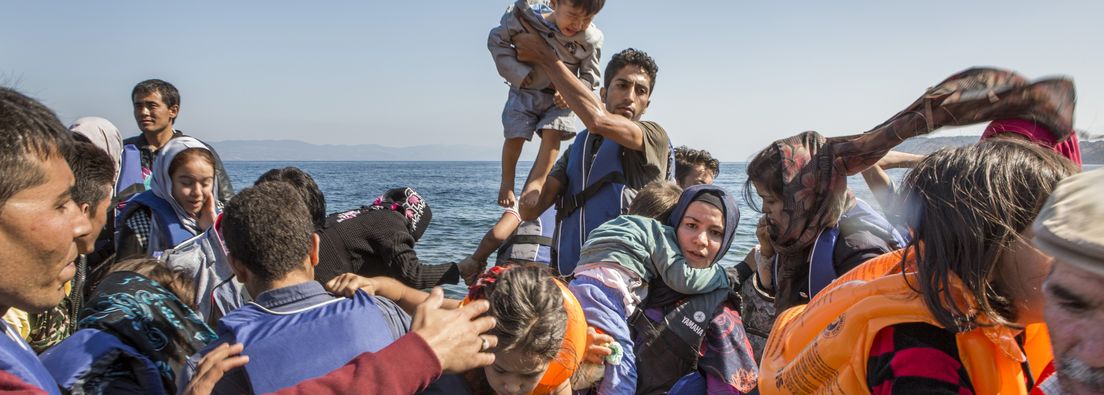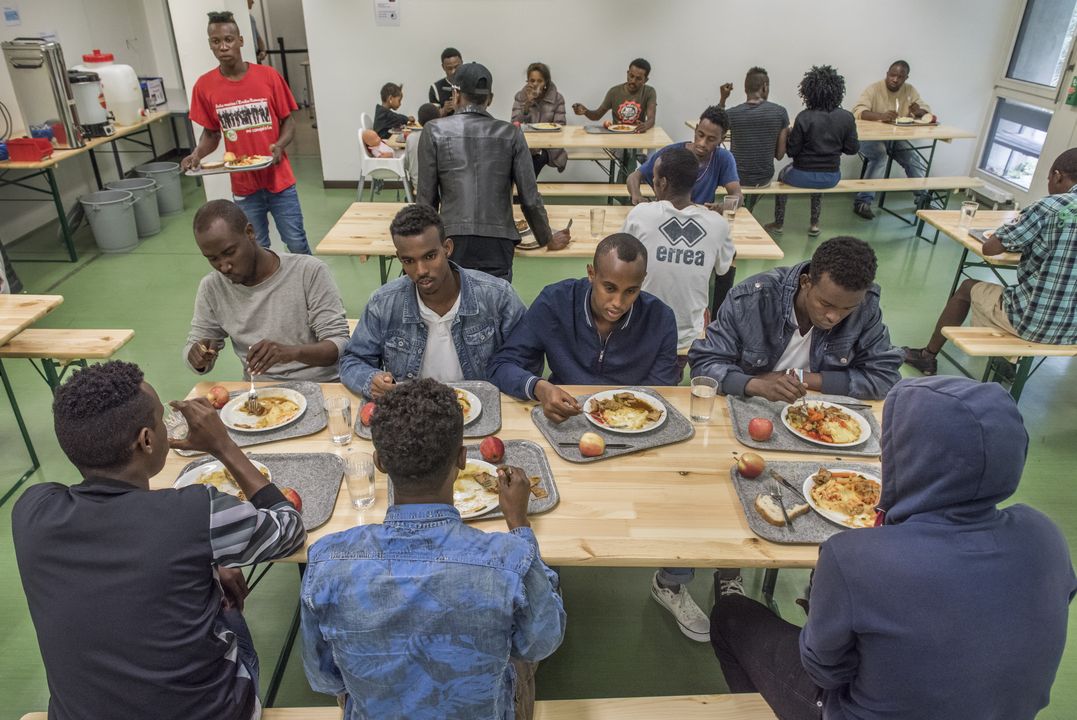In 2016, Europe received around 1.3 million asylum applications, which is roughly the same volume as in the previous year. This figure was mostly the result of the unusually high influx of migrants from the previous year, since not all of the incoming asylum applications from these migrants could be fully processed in a timely fashion. This was particularly the case for Germany, where 400,000–500,000 of the applications recorded in 2016 came from persons who had arrived in Germany earlier. This figure is also a reflection of the numerous crisis and conflict zones in the Middle East and on the African continent.
27,207 asylum applications in Switzerland in 2016
In 2016, Switzerland received 27,207 asylum applications, 12,316 fewer than in the previous year. The nearly one-third drop in asylum applications (-31.2 %) is mainly due to interruption of the Balkan route in March 2016. Most of the migrants arriving in the last four months of 2015 had reached Switzerland through this migration route. Since the route has now been largely closed off, Switzerland now receives a relatively small number of asylum seekers arriving from Balkan states.
Falling volume of incoming asylum applications in December
In December 2016, Switzerland received 1,766 asylum applications, 197 fewer than in November. This figure is considerably lower than that reported in December 2015 (−64 %). In particular, the number of asylum applications from Afghan migrants in December fell with respect to the previous year.
Main countries of origin of asylum seekers
Although Eritrea was the top country of origin of asylum seekers in 2016, the number of incoming applications from citizens of this country was nevertheless in decline. The number of Eritreans arriving in the south of Italy fell by about half with respect to the previous year, which also had an impact on the number of asylum applications filed in Switzerland: 5,178 Eritrean nationals submitted an asylum application in 2016, which is 4,788 fewer than in 2015.
The other main countries of origin of asylum seekers in 2016 were Afghanistan (3,229 applications), Syria (2,144 applications), Somalia (1,581 applications), Sri Lanka (1,373 applications) and Iraq (1,312 applications). The clear decline in the number of asylum applications from Afghan, Syrian and Iraqi nationals was thanks to closure of the Balkan route in March 2016. Around 90% the migrants who reached Europe in 2016 arrived from the Balkans.
More asylum applications handled in first instance
In 2016, the State Secretariat for Migration (SEM) handled 31,299 asylum applications in the first instance, which are 3,181 more than in the previous year. 5,985 were granted asylum, which amounts to a recognition rate of 22.7 % (2015: 25.1%). The protection rate (proportion of asylum seekers who were granted asylum plus temporarily admitted persons on the basis of decisions rendered in first instance) stood at 48.7% in 2016 (2015: 53.1%). The number of asylum applications pending a decision in first instance stood at 27,711, which constitutes a slight decrease compared to 2015.
Resettlement and relocation programme
Since the introduction of the UNHCR refugee resettlement programme in August 2015, a total of 968 asylum seekers have been afforded protection in Switzerland, 621 of which in 2016. Another 26 asylum seekers travelled to Switzerland in January 2017. The programme is intended for particularly vulnerable persons, who are currently in Syria or a neighbouring country and who have been granted refugee status by UNHCR. On 9 December 2016, the Federal Council decided to continue its commitment on behalf of victims of the Syrian conflict. Over the next two years, Switzerland will work closely with UNHCR and the cantons to accept another 2,000 particularly vulnerable persons under the resettlement programme.
In contrast, Switzerland has accepted at total of 368 persons under the EU refugee relocation programme since its inception in March 2016 (340 from Italy, 28 from Greece), of which 207 arrived from Italy in December. Under the relocation programme, asylum seekers who have already registered in Italy or Greece will be relocated to other EU member states. This measure is intended to relieve the burden on these two Dublin states, which have had to contend with a very high number of incoming asylum applications.
Asylum outlook for 2017
In the most likely scenario, the SEM expects that there will be 24,500 (+/- 2500) new asylum applications in 2017. Depending on how things develop, this figure could rise to 32,000 asylum applications. The most important factors influencing the number of incoming asylum applications in Switzerland in 2017 will once again be the volume and composition of migration flows through the central Mediterranean route. Another decisive factor will be whether the refugee agreement between the European Union and Turkey will be upheld. If this agreement falls through, it will be difficult to predict the impact on the number of incoming asylum applications in Switzerland. Equality important will be the asylum and deportation practices of other European countries as well as the terms of readmission agreements. For operational planning purposes, the SEM expects to receive 27,000 asylum applications in 2017.


